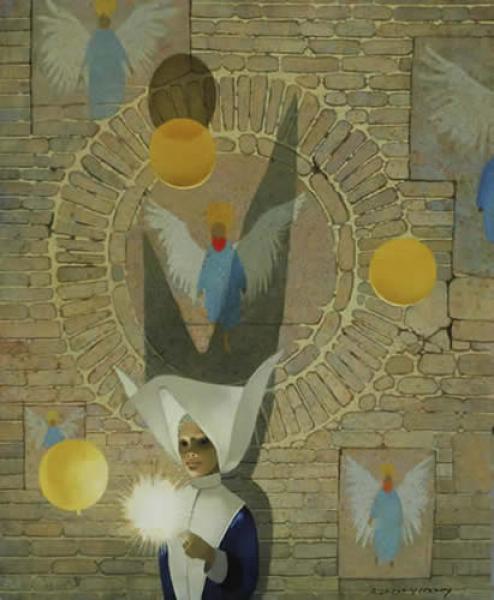
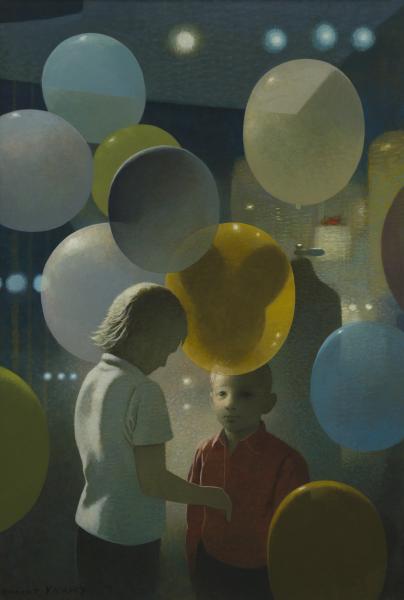
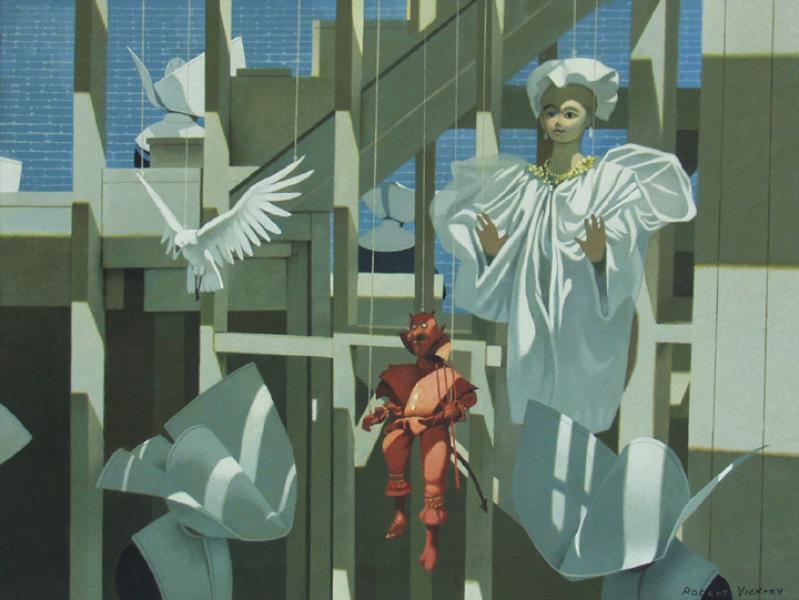
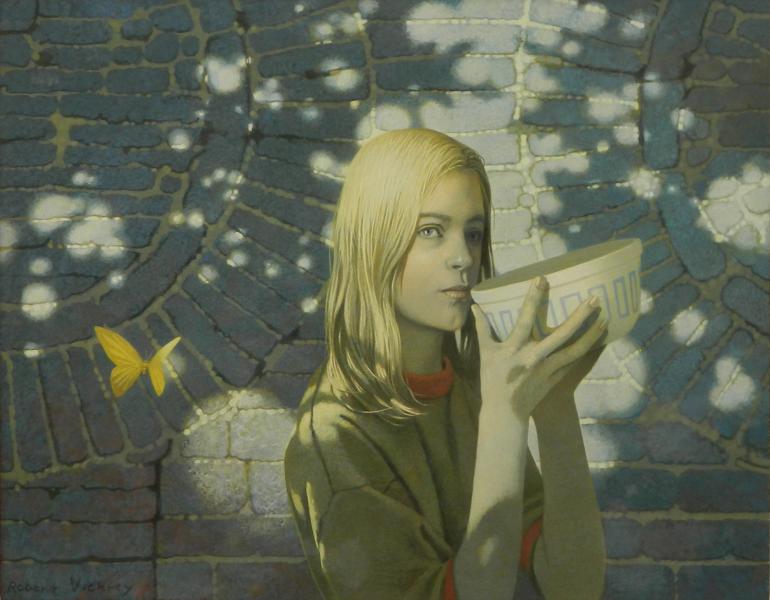
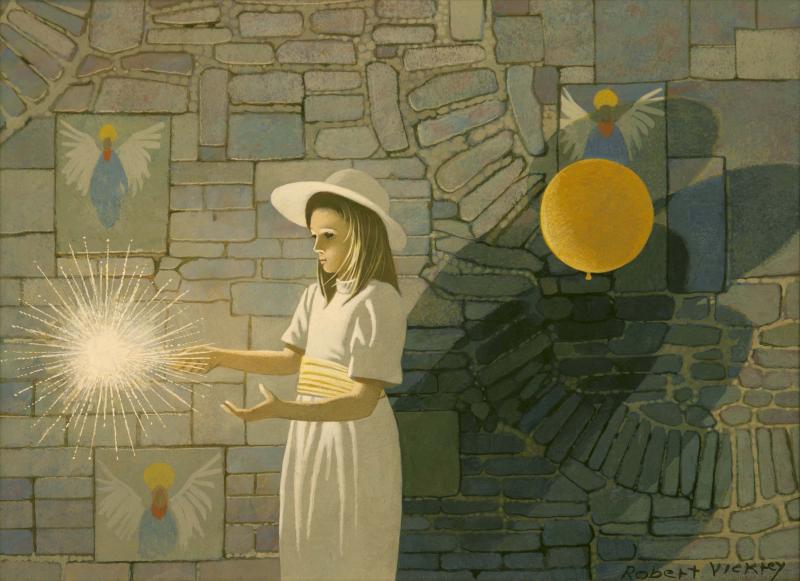
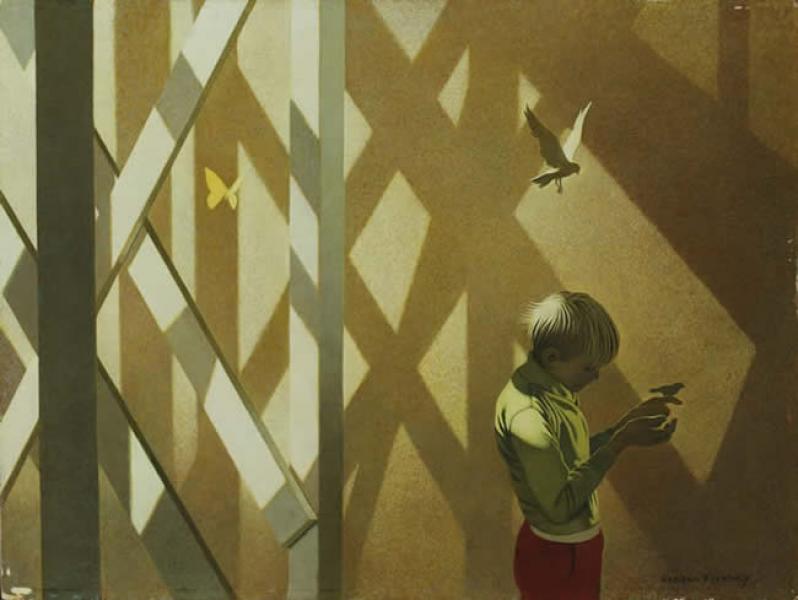
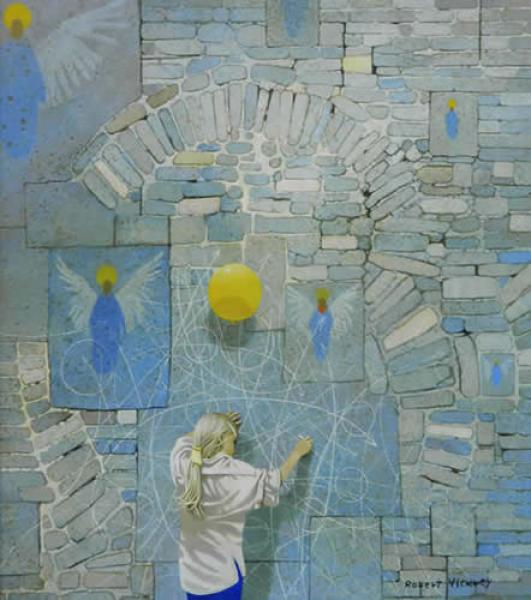
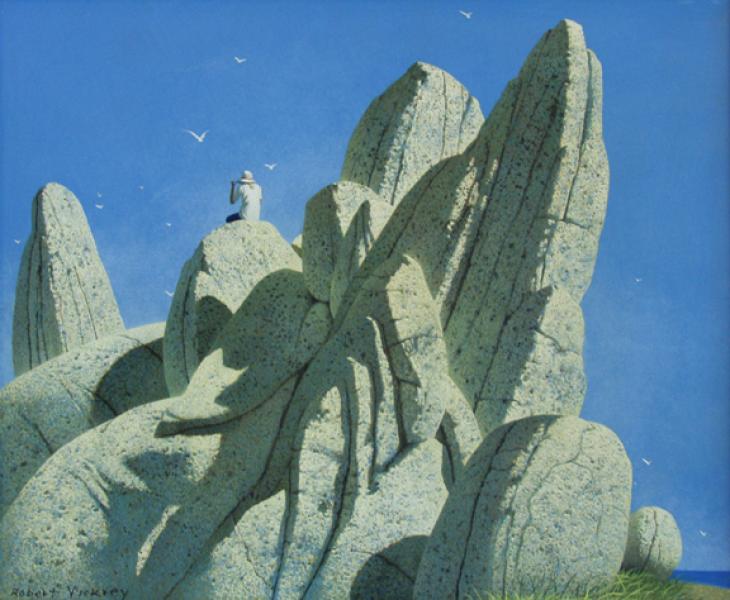
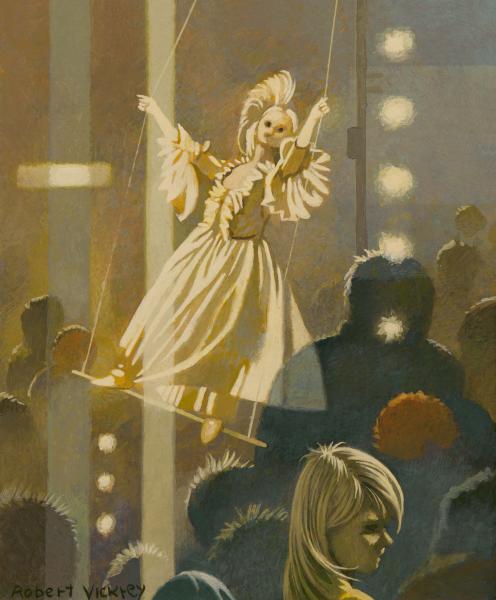
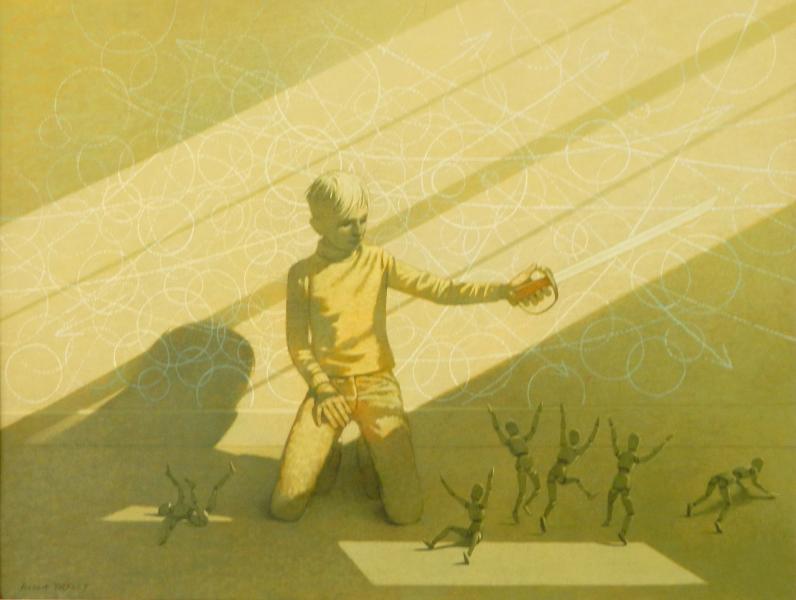
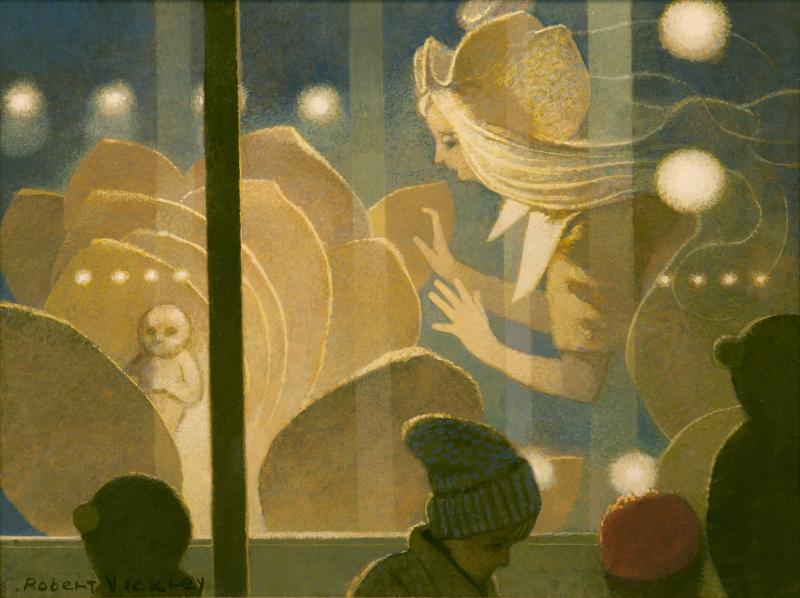
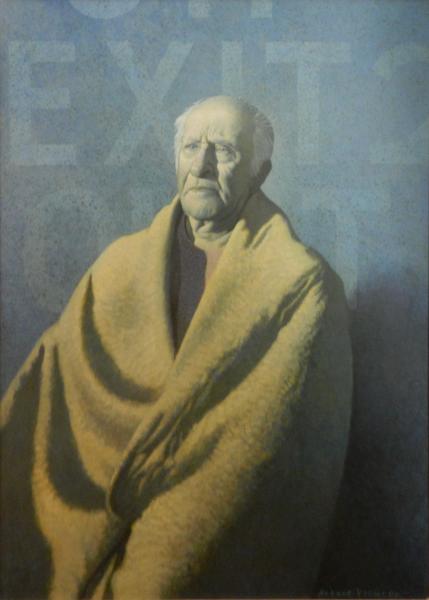
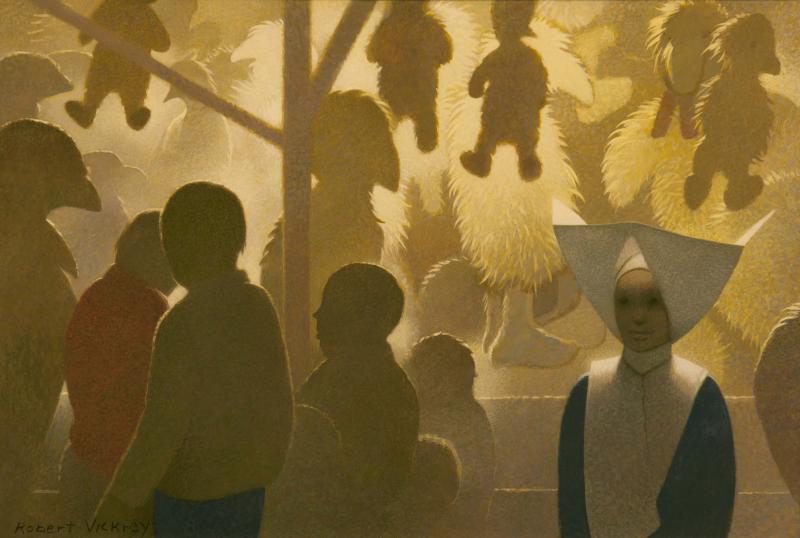
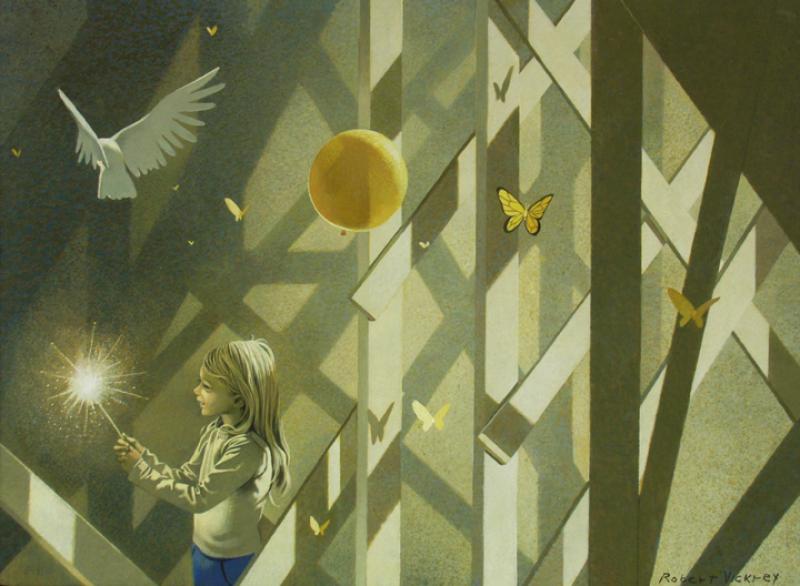
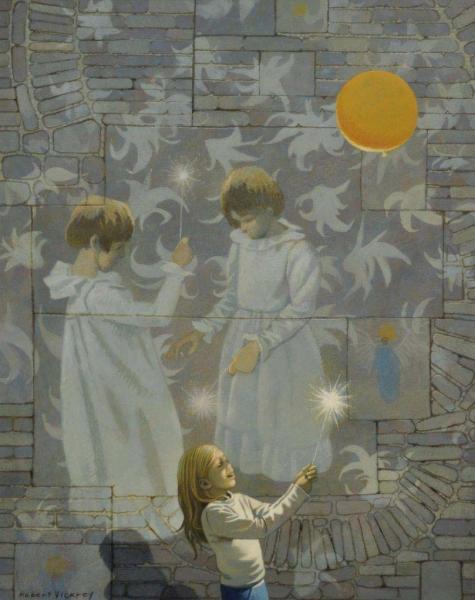
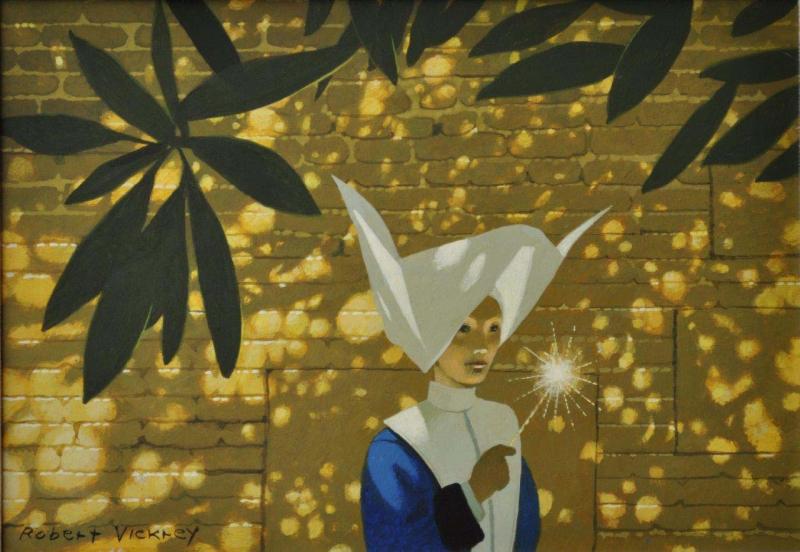
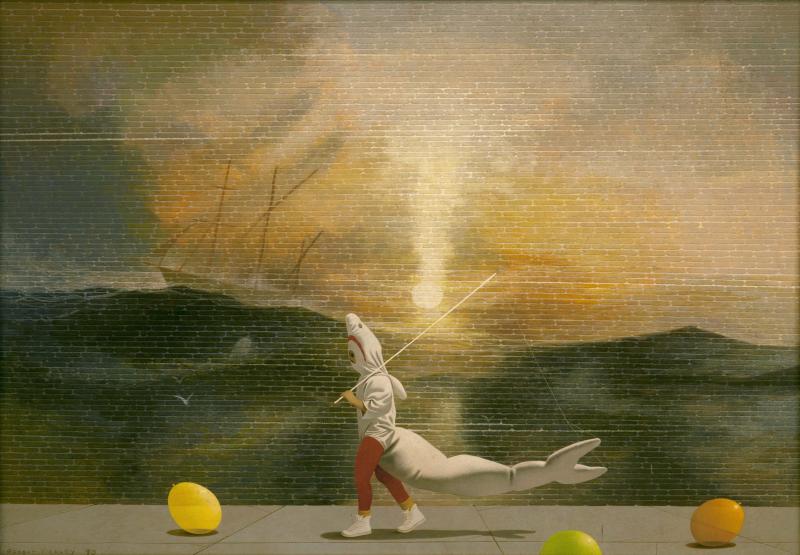
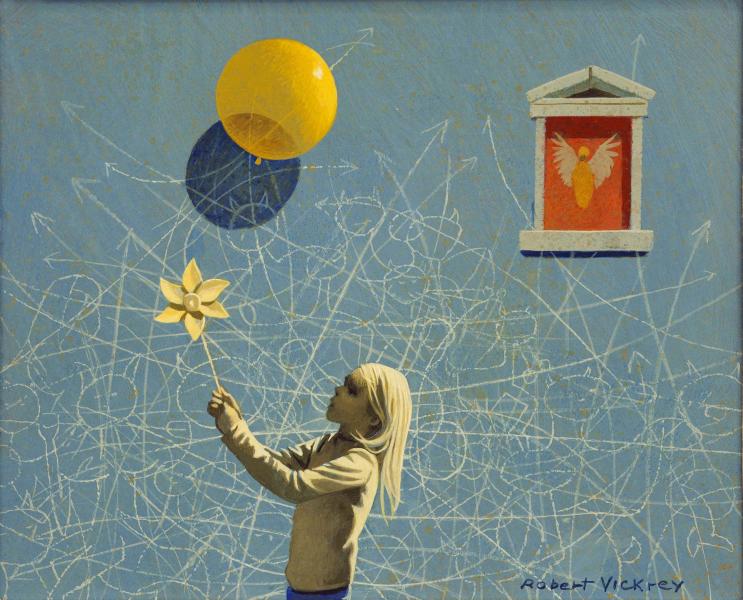
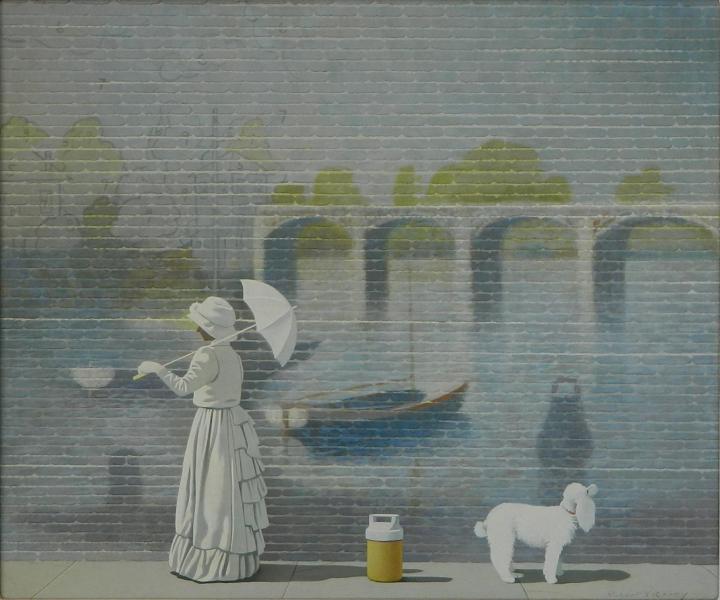
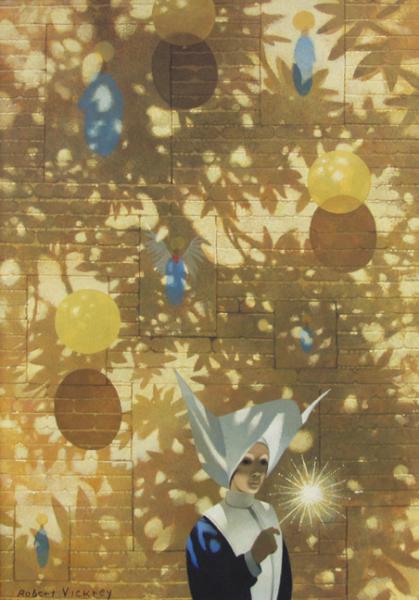
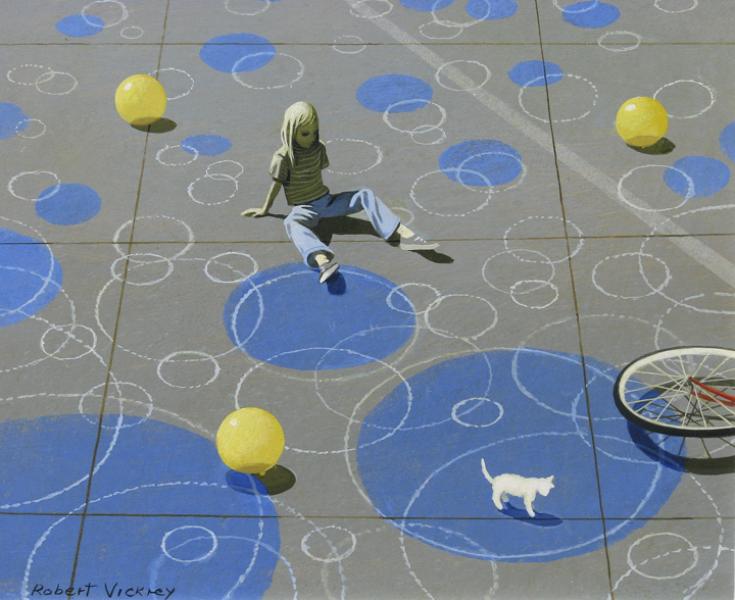
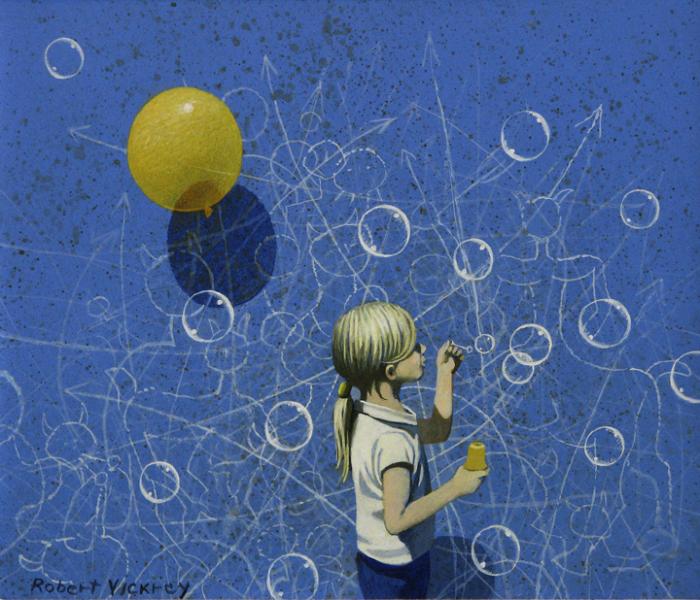
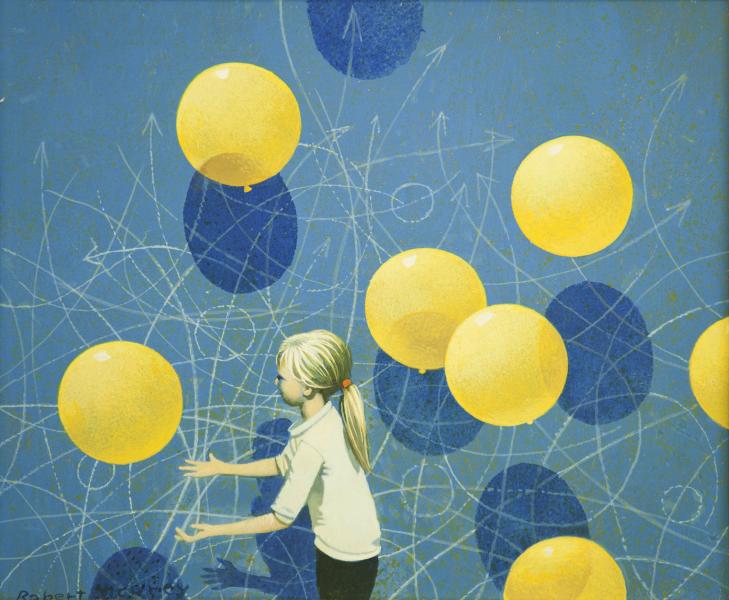
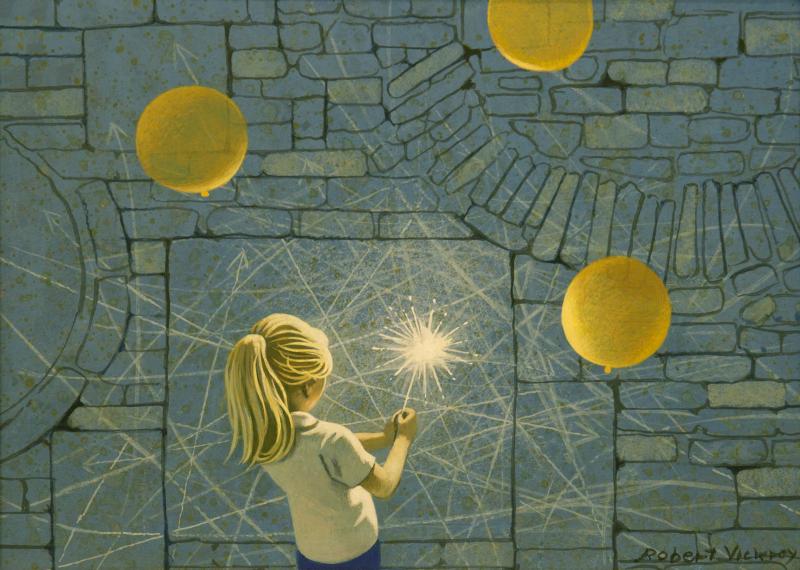
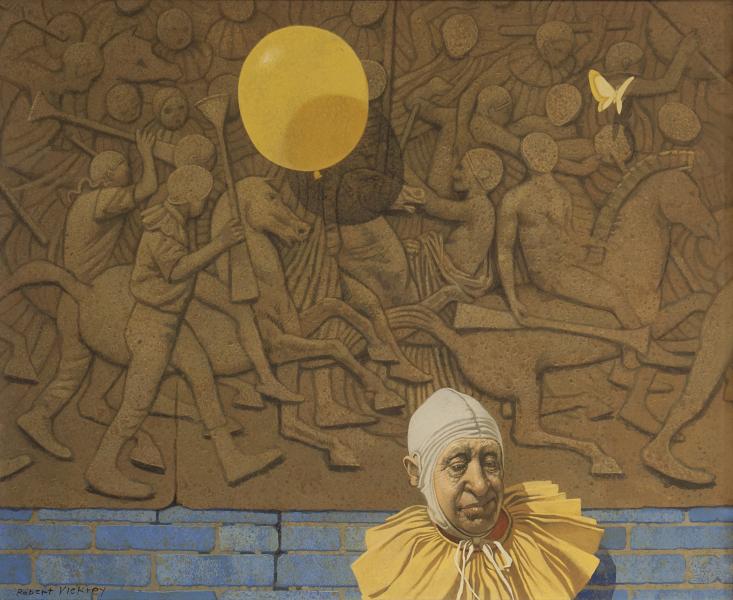
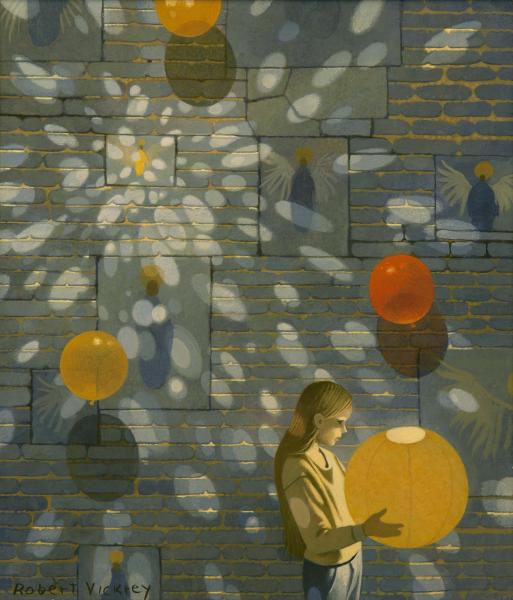
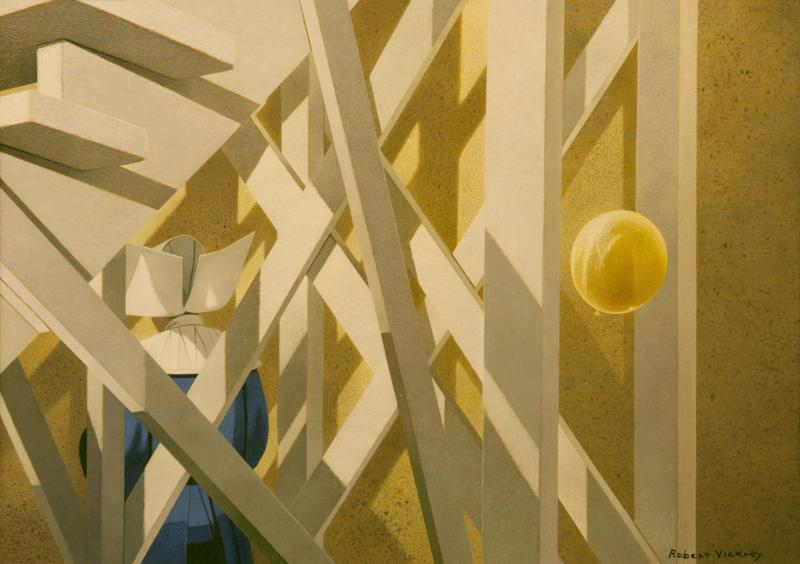
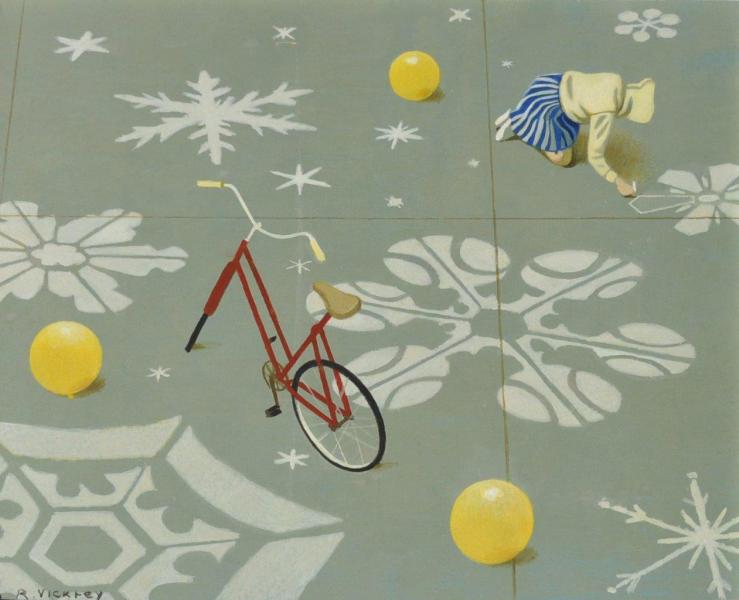
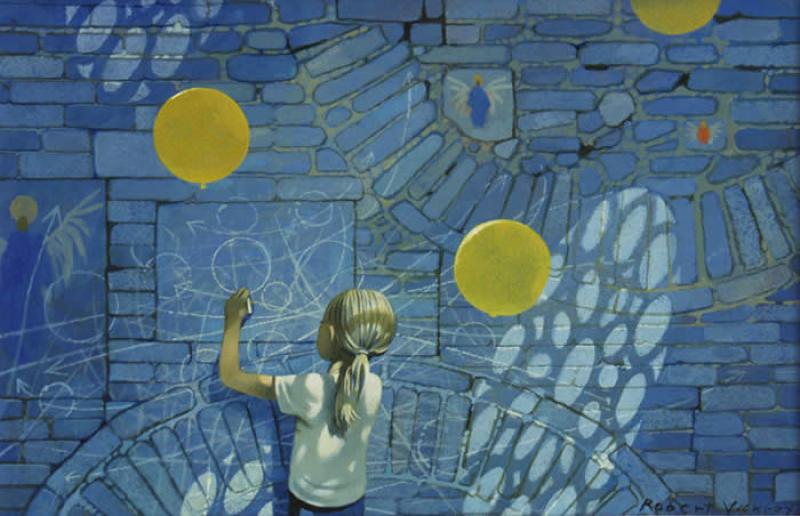
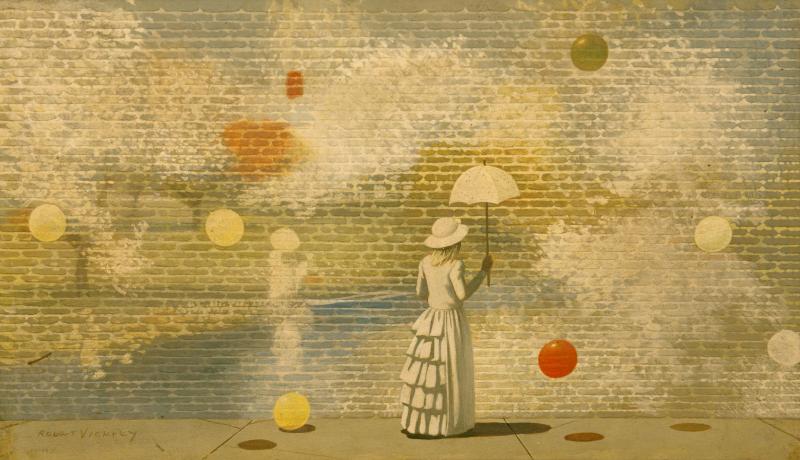
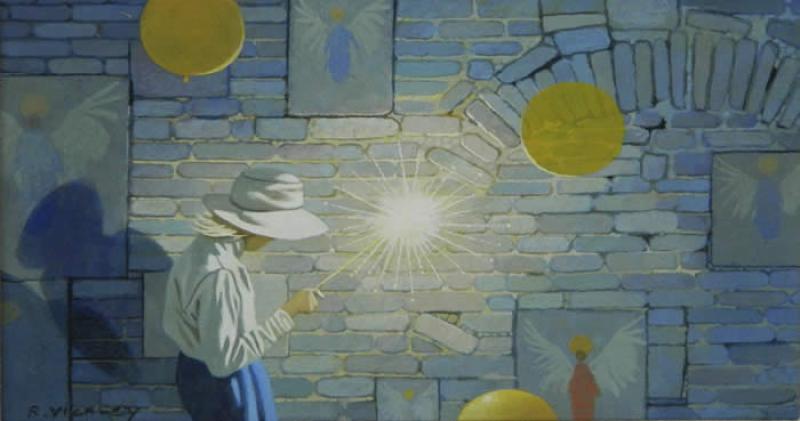
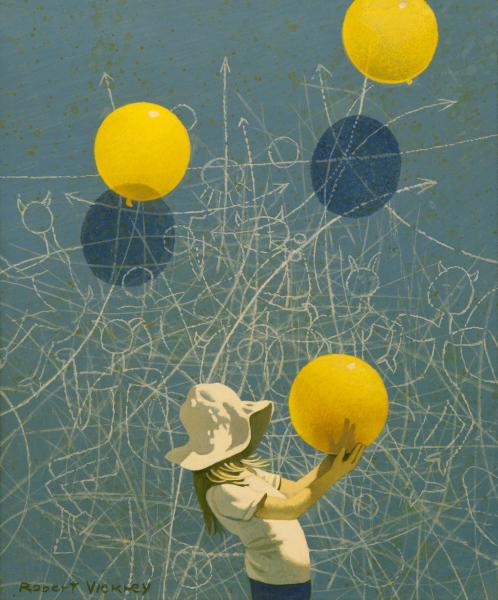
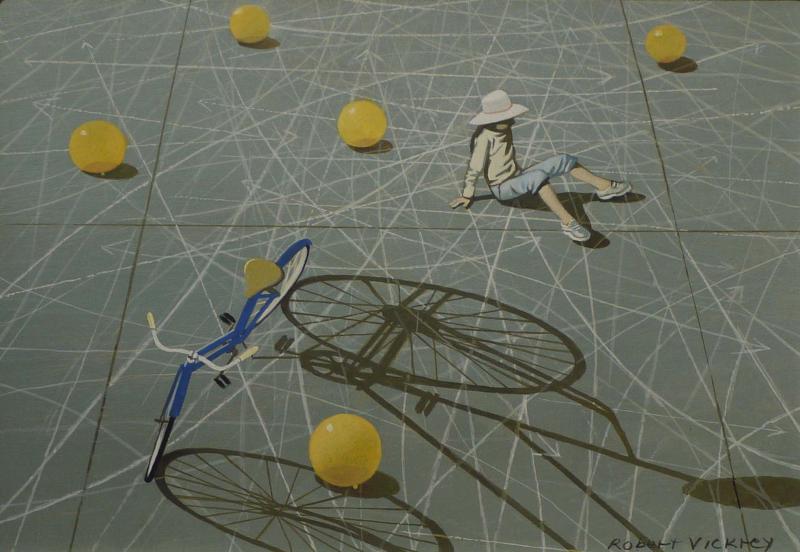
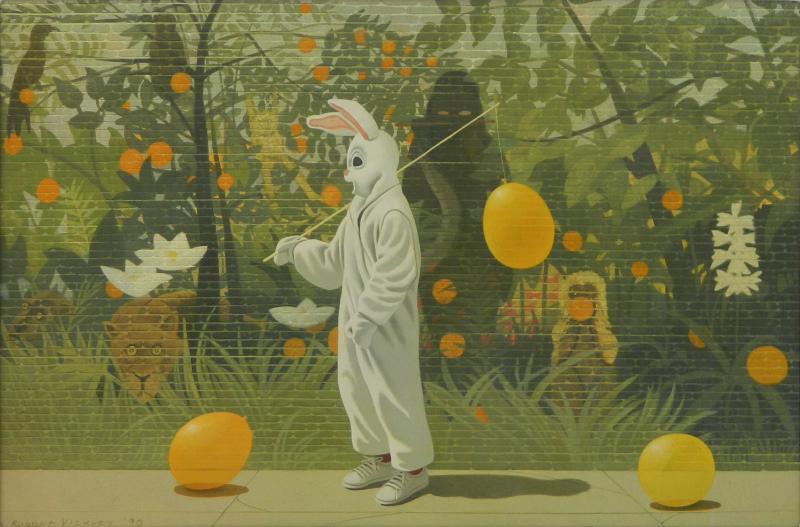
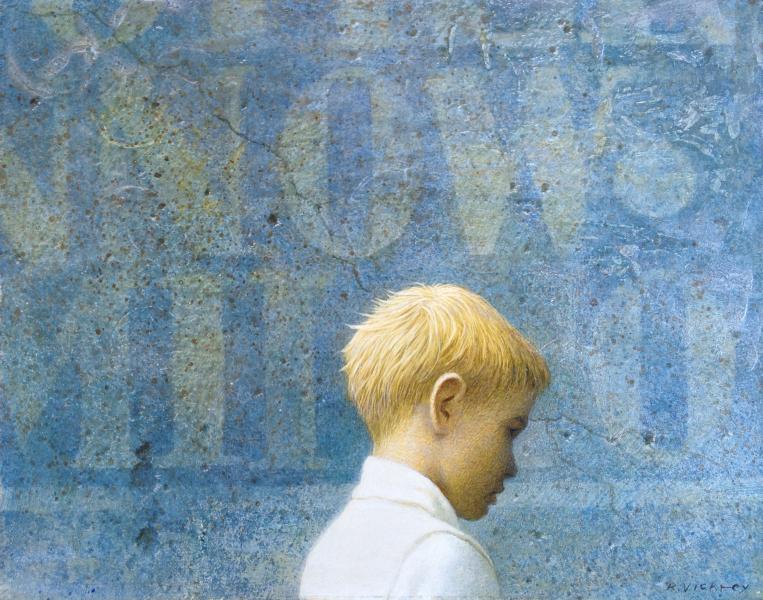
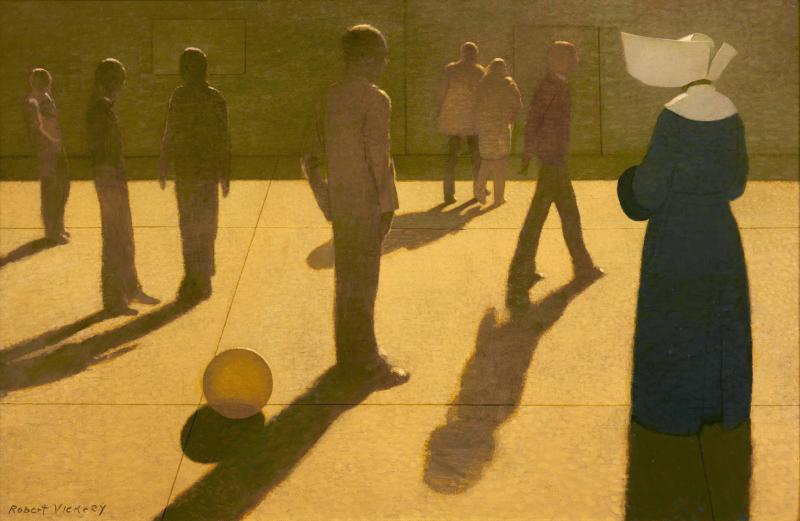
Robert Remsen Vickrey N.A., (1926-2011). Robert Vickrey was born in New York City. Educated at Yale (B.A., B. F.A.,) and at the Art Students League of New York, he trained under Kenneth Hayes Miller and Reginald Marsh. In a career that spanned more than half of a century, he continuously challenged conventions, and developed a unique iconography that joined psychological narratives with spellbinding imagery. Vickrey’s singular artistic vision allowed him to make an indelible mark on the development of American realism for this century.
“I only took the last two years of the five year program at the Yale School of Art. I’m the only one that was ever allowed to do it. They looked at my work and saw that I had already accomplished in my work what the other students had taken three years to accomplish. So I completed the last two years, which meant that they gave me a booth and I sat and painted all day. Every so often my teacher would walk by and say ‘Mmm hmmm, keep it up’ I think he did not want to influence me which was very nice.”
Shortly after leaving art school, Vickrey created the first of what has become one of his most recognizable series, centered on the unusual shape of a nun’s cornet. In 1952, he completed the painting Labyrinth, in which he depicts a nun lost in a maze of distorting mirrors and decaying movie posters. The painting was submitted to the Whitney Museum’s annual juried competition and later purchased as part of its permanent collection.
Vickrey was attracted to the abstract shapes of the nuns’ hats, and the way light and shadow manifested themselves in and around their angles. He also suggested that they were a symbol of something too fragile to exist in this world. The notion of fragile beauty amidst life’s myriad mysteries and dangers is a theme which Vickrey has continued to explore, in this and other symbology, throughout his career.
In images that have an immediate aesthetic appeal, Vickrey applied ambiguous narrative connotations for his viewers to interpret, if they choose. Butterflies, bubbles, balloons, angels and children personify innocence, lightness, and wonder. Mazes, brick walls, and shadows provide a darker, antithetical context.
Thinking in several dimensions at once, Vickrey began by creating a compelling mood and design, and then embarked on a narrative subtext to make commentary about art, war, politics, and spirituality. He was also interested in social aspects of life and art, commenting that his imagery takes on different meanings relative to the viewer’s own disposition.
Long fascinated by cinema, Vickrey was also an amateur filmmaker, and one can see this cinematic influence in much of his work. In his satirical commentary and his thematic inclusion of memories, dreams, and desires, the artist paid homage to Fellini. Meanwhile, his habit of placing ordinary people in extraordinary circumstances echoed the suspense of Alfred Hitchcock. While he often produced feelings of disquiet, the foreboding nature of Vickrey’s work is counterbalanced by the serene beauty of its execution.
This sort of duality extends to formal interpretations of Vickrey’s work. His masterful technical ability resulted in crisp, highly realistic depictions of intelligible figures and objects. However, Vickrey transcended mere realism by breaking up and rearranging his objects, placing them in original or imagined combinations. In this way, he incorporated abstract ideas within a highly understandable visual vocabulary. “I’m trying to capture something that doesn’t exist, but perhaps by using realistic terms I will make the viewer believe that these things do exist.” He likens this phenomenon to experiencing a vivid dream, whereby unlikely or impossible events feel entirely possible.
Using external symbols, Vickrey illustrated a many-faceted interior world. He possessed a profound sensitivity to man’s quiet struggles and created vivid and dynamic portraits of some of life’s most perplexing intellectual questions.
Vickrey held more than one hundred solo shows at museums and galleries throughout the U.S. He participated in 142 group exhibitions and 125 of his paintings are represented in the permanent collections of approximately seventy public museums and institutions, including the Metropolitan Museum of Art, the Whitney Museum of American Art, the Corcoran Gallery, and the National Academy of Design.
He has won fifty-four major national prizes, has been elected to full membership in the National Academy of Design and the American Watercolor Society, and has been designated a Dolphin Fellow by the latter group. He created seventy eight cover paintings for Time magazine between the years 1957 and 1968. Forty eight of these covers are part of the permanent collection in the Smithsonian Institution’s National Gallery. Vickrey has been the subject of three books, including Creatures of the Spirit, by Donald Miller, and Robert Vickrey: The Magic of Realism, by Dr. Philip Eliasoph. He had been featured in numerous major publications including American Artist and American Art Collector magazines, and was the subject of a PBS television program. Vickrey had also authored four books, The Artist at Work, New Techniques in Egg Tempera, The Affable Curmudgeon and A Con Man’s Carnival.